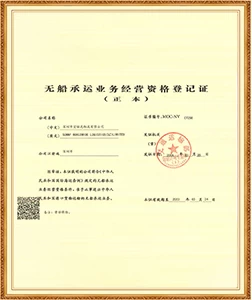Did the shipping company significantly increase freight rates twice in October?
Sunny Worldwide LogisticsIt is a logistics company with more than 20 years of transportation experience, specializing in Europe, the United States, Canada, Australia, Southeast Asia and other markets. It is more of a cargo owner than a cargo owner~

Due to the possibility of a strike on the East Coast of the United States on October 1, many shipping companies have announced in advance plans to significantly adjust freight rates for U.S. routes. Non-alliance shipping companies claim that they will increase the price by US,000 per TEU, while some Asian alliance shipping companies plan to increase the price by US,000 on October 1, and propose an additional increase of US,000 on October 15.
However, it is worth noting that the two giants Maersk and Hapag-Lloyd have not proposed any price increase plans so far, and industry executives are generally not optimistic about this round of price increases.
The person in charge of a large freight forwarding company pointed out that due to the increase in U.S. tariffs and the risk of strikes at East Coast ports, U.S. importers have increased procurement and inventory replenishment in advance, causing the traditional peak season to come to an end early.
Given current market conditions, there are many challenges in using the threat of a strike to significantly increase freight rates. Specifically, it has been nearly November for goods shipped after October 1 to arrive in the East United States. Even if a strike or slowdown occurs, it may have subsided by then. In addition, the fourth quarter is the traditional off-season, and freight demand has significantly reduced, further weakening the feasibility of price increases.
Industry analysts believe that shipping companies may be able to take advantage of the strike to increase prices by US0 to US0 per TEU, or increase freight rates by reducing flights, but the previously announced substantial price increase of US,000 to US,000 appears unrealistic.
In addition, with the seasonal decline in cargo volume demand and increased supply of shipping capacity in the fourth quarter, freight rates are more likely to fall rather than rise. As for the dockworkers' strike in the eastern United States, considering that the U.S. presidential election is approaching, the possibility of government intervention cannot be ignored. If the strike continues, although some shipping companies plan to increase prices again on October 15, Maersk and Hapag-Lloyd remain on the sidelines and have not followed up on price increases.
In order to cope with the impact of possible strikes, some goods may be imported from the West United States and then transported to the East United States by rail. This move may help support the freight rates in the West United States. The actual impact of the strike on freight rates will depend on the length of the strike. Executives of European shipping companies revealed that Maersk and Hapag-Lloyd prefer to keep current freight rates stable and only consider a small increase when a strike actually occurs. Senior executives of Asian shipping companies believe that a price increase of US0 to US0 per TEU is more reasonable. However, considering market supply and demand and competition from low-priced non-alliance ships, the room for price increases is limited and is mostly a short-term phenomenon.
According to the latest Export Container Freight Index (SCFI) data released by the Shanghai Shipping Exchange, freight rates on the U.S. line reached a peak on July 5 this year, with the freight rate per TEU on the West-U.S. line reaching as high as US,103. However, as of September 13 (last Friday), the freight rate on this route has dropped significantly to US,494, with a cumulative decrease of US,609, a decrease of 32.20%. Similarly, the freight rate on the US East route also fell from a high of US,945 to US,838, a decrease of US,107, or 31.24%.
The reason why the market's actual freight rates are lower than the level shown in the index is mainly due to the pricing strategy adopted by the shipping companies. Shipping companies usually match long-term contract freight rates (long-term contract rates) with spot market freight rates (spot freight rates) to balance supply and demand. In addition, in order to attract large customers and maintain market share, shipping companies have also provided preferential measures including special prices and special flights such as overtime ships, which have further depressed the actual freight rates charged. Although freight rates have experienced a significant decline, the current freight rate levels are still many times higher than the cost price.
Freight rates have fallen for the fourth consecutive time, with the European line plummeting by nearly 20% in a single week, and there is still room for downward adjustments in the Eastern United States.
Freight rates in the shipping market continue to undergo adjustments. The latest Shanghai Shipping Exchange Export Container Freight Index (SCFI) released last week fell by 215.63 points to 2510.95 points, a weekly decline of 7.9%, and has fallen for four consecutive weeks. Among the major routes, the European route had the most significant decline, nearly 18%; the Mediterranean route followed closely, with a drop of nearly 12%; and the East American route also recorded a drop of nearly 9%.
Industry insiders said that since Christmas-related goods have been shipped in advance, freight rates are expected to continue to fall until the end of September. In response to market changes, the shipping company plans to start arranging empty sailings from October. Furthermore, Mediterranean routes are expected to decline faster than European routes.
For the US East route, industry insiders believe that there is still room for further decline in freight rates because the preferential prices launched last week have not yet been fully reflected in the market. At the same time, affected by the National Day Golden Week holiday and the expectation that U.S. dockworkers may strike, cargo owners generally adopt a conservative wait-and-see attitude and are not willing to ship goods. This may lead to emergency orders shifting to the West Coast route, thereby slowing the decline in the West Coast route.




















